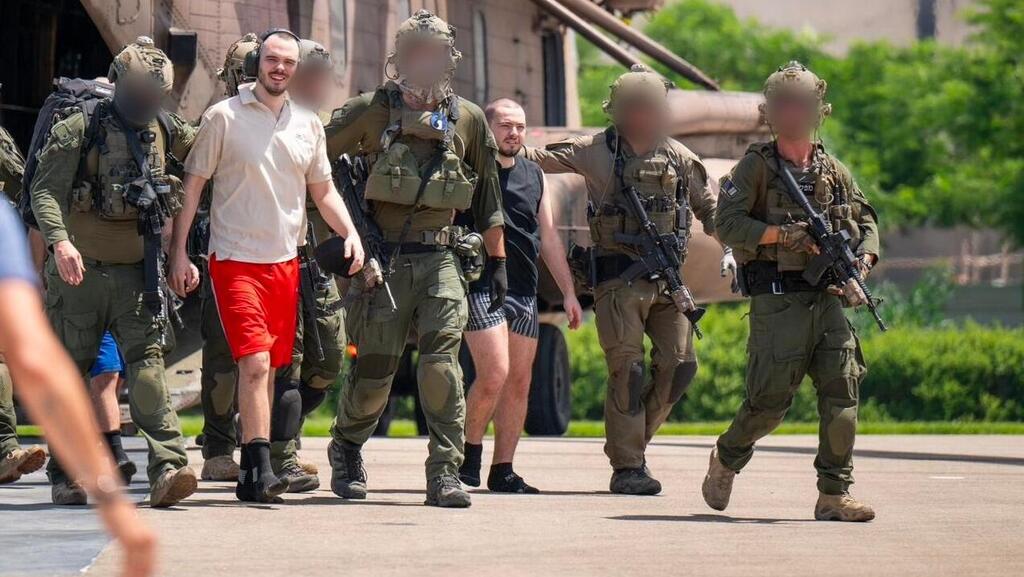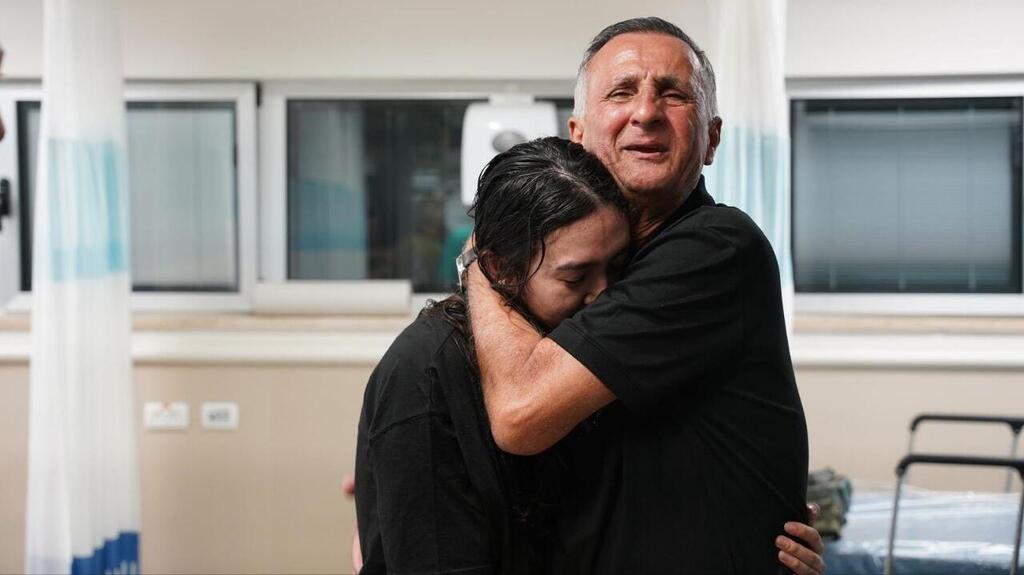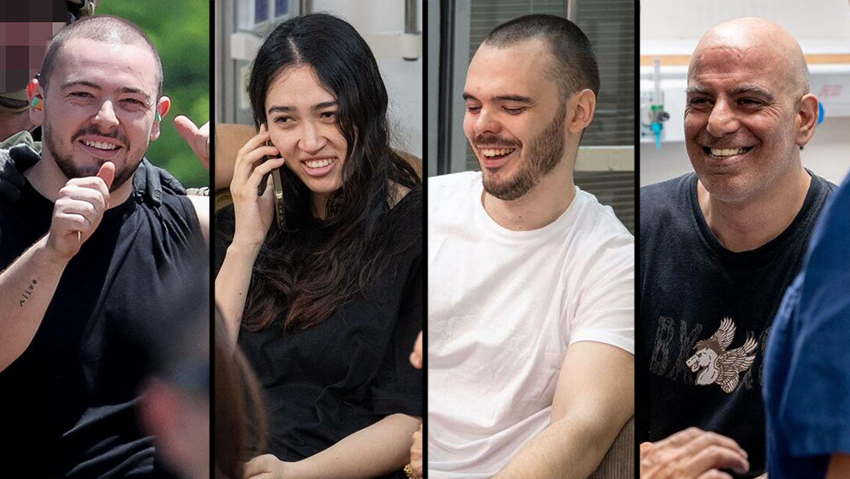New details have come to light about Israel's intelligence cooperation with the United States and Britain in the wake of the success of the rescue operation in Nuseirat in central Gaza which rescued hostages Noa Argamani, 25, Almog Meir Jan, 21, Shlomi Ziv, 40, and Andrey Kozlov, 27 from Hamas captivity, the New York Times reported overnight between Sunday and Monday, with reporting work by Yediot Aharonoth and Ynet journalist Ronen Bergman.
Three current or former senior American officials explained that intelligence sharing between the U.S. and Israel regarding the war in the Gaza Strip was initially focused on hostage rescue efforts, but has expanded over time.
3 View gallery


The moment the helicopter carrying rescued hostages lands in Israel
(Photo: IDF Spokesperson's Unit)
According to the report, Israeli and U.S. officials – military and intelligence – work in cooperation and share drone and satellite photographs with each other, along with communications monitoring and any additional information that may be a clue to the locations of the hostages.
A senior Israeli official stated that British and American drones are able to provide information that Israel's drones are unable to collect. American military officials have reported that the U.S. surveillance drones mostly have the same sensors as the British and Israeli ones, but the large number of American aircraft allows surveillance of additional territory more frequently and for longer periods of time.
Officials added that the UAVs cannot map Hamas' vast underground network of tunnels – Israel uses highly classified ground-based sensors to do so – but their infrared radar can detect the heat signatures of terrorists and other humans entering or exiting the tunnel entrances on the surface.
According to the report, Israel's monitoring of the movements of the hostages – in which Britain also plays a role – is not based only on location. Military and intelligence officials are looking for patterns and trying to learn how long Hamas keeps hostages in one place before moving them to another. If the agents are able to trace patterns, this can help determine more precisely the window of time available to perform a rescue operation.
The newspaper noted that the amount of intelligence gathered is often "piecemeal." A hint that a particular hostage is still alive or information about which terrorist organization is holding the hostage may not reveal an exact location, but may provide a clue about what part of the Gaza Strip to increase information gathering efforts. Although it is impossible to know with certainty how reliable the information is, the moment a certain location is determined with a sufficient degree of confidence and Israel believes that a hostage may be found at that point, intense planning of a rescue operation begins.
At the beginning of the war, according to the article, some intelligence officials believed that most of the hostages were being held in tunnels. However, it seems that living underground proved to be complex for Hamas commanders, and that keeping the hostages in the apartments of the terrorist organization's supporters turned out to be easier.
As the war continued, the report noted, and with the help of captured documents, the interrogations of captured terrorists, as well as American and British help, Israeli intelligence about the hostages improved. Israeli and American officials believe that it is possible that some of the hostages are being moved more frequently now than at the beginning of the war. At the same time, officials in Israel and the U.S. said that, due to the IDF attacks in the Gaza Strip, the areas where Hamas can hide have decreased, and the opportunities to locate them have increased.
Beyond that, American officials point out that, as movement in Gaza became more complicated, communication between the Hamas battalions and the central leadership of the terrorist organization was damaged, meaning that hostages were held longer in hiding places. As Israel strives to locate the hostages, Hamas leaders work to continue hiding them - and are aware that this is the best bargaining chip they have in the negotiations for a cease-fire agreement. In addition, it is believed that a small group of hostages is being held near the leader of Hamas in the Gaza Strip, Yahya Sinwar, in order to serve as "human shields."
3 View gallery


Hostage Noa Argamani is reunited with her father, Hamas captors have orders to kill thehostages if they think IDF forces have located them
(Photo: IDF Spokesperson's Unit)
Leaders of the terrorist organization have ordered the terrorists holding the hostages that if they think Israeli forces are coming, the first thing they should do is shoot the hostages, according to Israeli officials. If hostages were indeed killed in the rescue operation in Nuseirat, as claimed by Hamas and denied by the IDF, it is possible that terrorists were responsible for this, and not an Israeli attack. For now, according to the report, Israeli and American officials can neither refute nor confirm the terrorist organization's claims.
Lieutenant-Colonel (res.) Avi Kalo, former head of the Prisoners and Missing Persons Division at the military’s Intelligence Unit, noted that "one must remember that the release of the four hostages is ultimately a tactical achievement that does not change the strategic aspect. Hamas still has dozens of hostages, the vast majority of whom, if not all, will not be released in rescue operations, but can be rescued only as part of a cease-fire deal."



